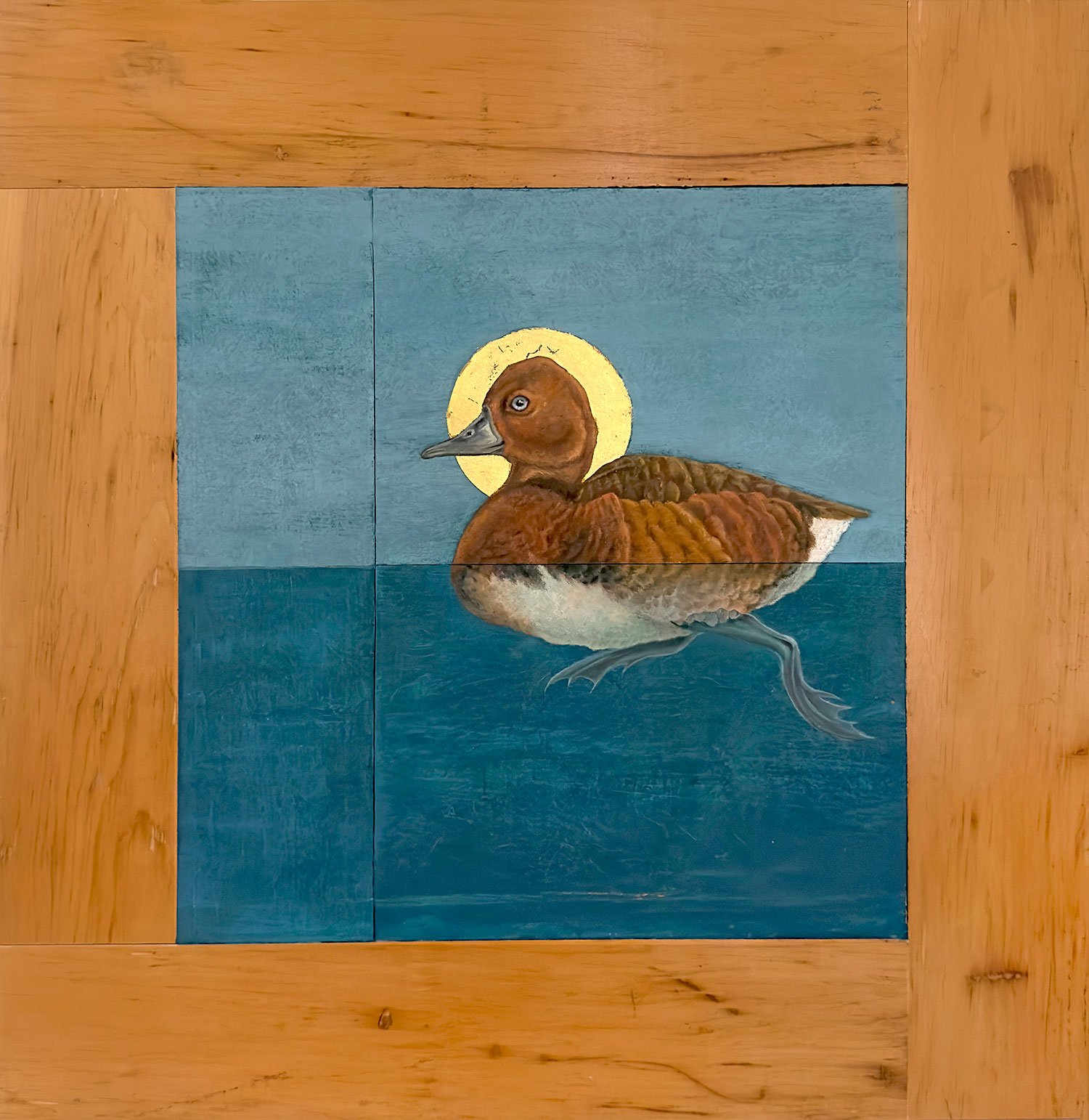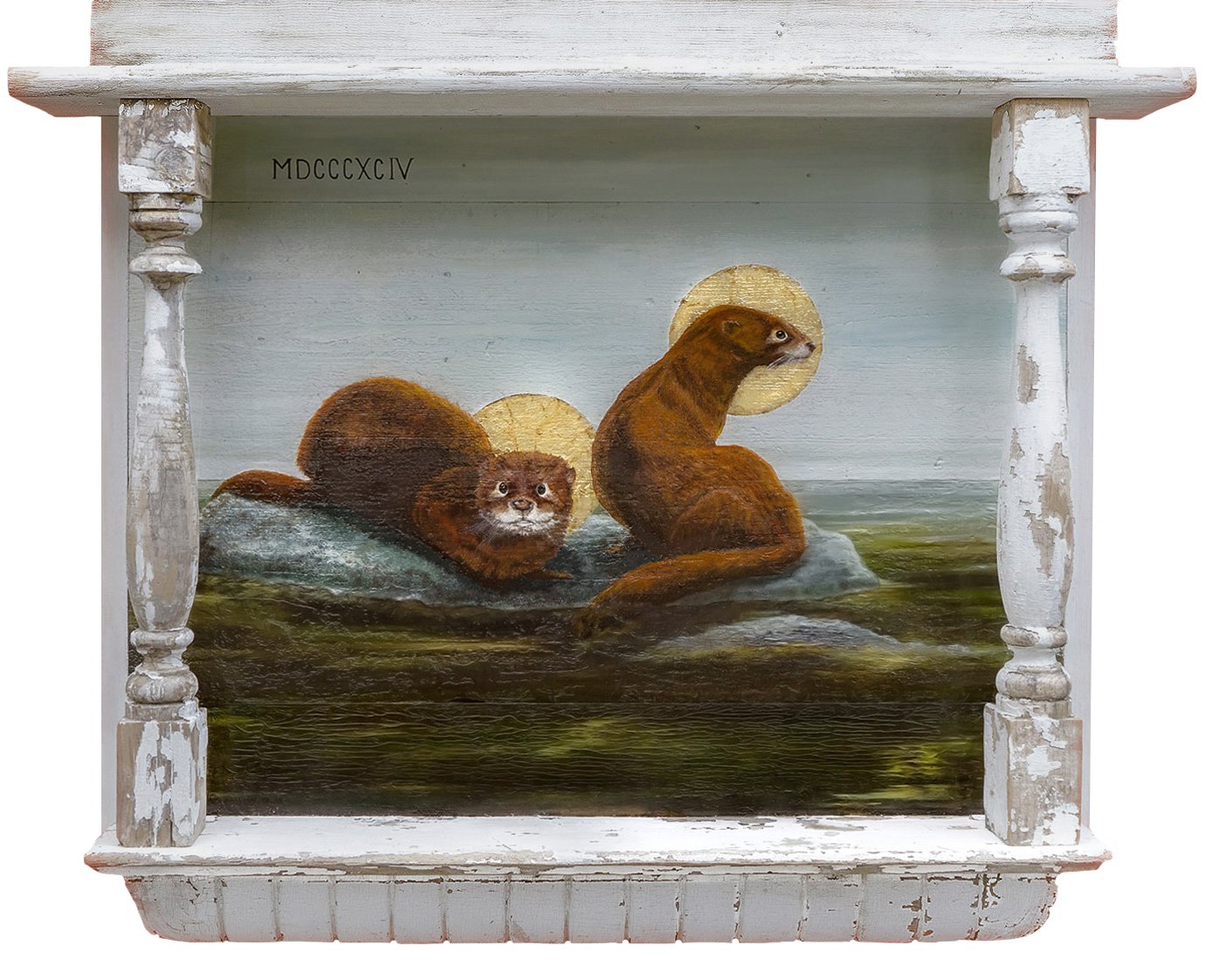The Madagascar Pond Heron (Endangered), oil & gold leaf on foundry mold | 46h x 22w x 9d inches
Reddish Egret (Threatened), oil & gold leaf on found wood | 43h x 19w x 2d inches
New Zealand Bittern (Extinct), oil on butcher block | 37h x 19w x 4d inches
Blakiston's Eagle Owl (Endangered), oil & gold leaf on foundry mold | 37h x 22w x 10d inches

Addax, (Critically Endangered) | The wild population located mostly in Niger is estimated to be under 100. Their decline due to poaching and habitat disturbance from oil exploration. Oil on panel | 10 x 10"

Somali Ostrich, (Vulnerable) | Native to the Horn of Africa this species is undergoing rapid decline due to hunting for its meat, eggs, skin, and feathers. Oil on panel | 12 x 12"

Wild Bactrian Camel, (Critically Endangered) | In decline in China and Mongolia, extinct in Kazakhstan, it has become a target of hunting, mainly persecution as they compete with domestic camels and livestock for water and grazing. Oil on panel | 12 x 12"

Madagascar Pochard, (Critically Endangered) | An extremely rare diving duck thought to be extinct in the late 1990s, but rediscovered in 2006. Water quality and temperature due to human activity threatens their survival, though conservation efforts offer a glimmer of hope. Oil & gold leaf on wood | 21 x 20.5"

Sea Mink | Once abundant this species was found along the North American Coast, up to Nova Scotia. The unregulated fur trade eventually led to its extinction. Due to its large size the Sea Mink was more desirable than other mink species further inland. The last recorded kill was made on Maine in 1880 near Jonesport, extinction is thought to have occurred between 1860 and 1920.

Falkland Islands Wolf | Charles Darwin arrived at the Falkland Islands in 1833, and described this wolf species as rare and tame. He predicted that the wolf’s naive trust in humans would soon end in its demise. Like many island species, it was totalView fullsize Falkland Islands Wolf | Charles Darwin arrived at the Falkland Islands in 1833, and described this wolf species as rare and tame. He predicted that the wolf’s naive trust in humans would soon end in its demise. Like many island species, it was totally naive to predators - including humans - and was easily killed by early European settlers. In 1876 it went extinct due to hunting. A blend of fox and wolf traits, short legs and a white tipped tail, it's likely that this species crossed an ice bridge between Argentina and the islands during the ice age (about 16,000 years ago). This also explains why the Falkland Islands wolf was isolated as the only mammal on the islands. Oil & gold leaf on wood |
Knock 'em Dead, Riverine Rabbit (Critically Endangered). With ears and bodies generally longer than most rabbits this species native to the Karoo Desert in South Africa is in decline due to loss and degradation of habitat. 25 x 24 x 8"
Step Right Up (endangered tiger) The most immediate threat to wild tigers is poaching due to illegal trade. They have lost 93 per cent of their historical range due to human activity and development. Prey depletion has led to human conflict as domestic livestock becomes the alternative. 30 x 26 x 7"
Darwin's Fox (critically endangered) | Named after scientist Charles Darwin who discovered the species in 1834, it is one of the worlds smallest foxes. Endemic to Chile, the conversion of habitat into farmland combined with the introduction of diseases from domestic dogs threatens their future. 31 x 22 x 8"







